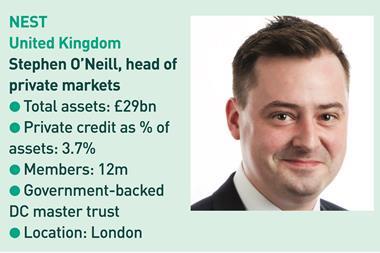The German Financial Supervisory Authority, BaFin, has published a sustainable finance strategy explaining how it indends to tackle greenwashing by deploying a full range of regulatory tools at its disposal.
BaFin will check compliance with transparency and disclosure obligations on financial products with an ESG impact, especially looking at the Sustainable Finance Disclosures Regulation (SFDR) and Articles 5 to 7 of the Taxonomy Regulation on transparency of sustainable investments and financial products that promote environmental characteristics in pre-contractual disclosures.
It is important that market participants deal appropriately with sustainability-related characteristics of their products, or the sustainability goals, as early as the product development stage, BaFin said, adding that the sustainability preferences of investors must be taken into account when providing advice.
BaFin will look at the implementation of the requirements on product distribution in accordance with the Delegated Regulations for the Insurance Distribution Directive (IDD) and MiFiD II.
It scrutinises balance sheets’ disclosure compliance with the Corporate Sustainability Reporting Directive (CSRD) obligations, building up capacities to enforce the rules, it added in the strategy.
The German regulator will apply the solvency supervision rules (pillars 1 and 2 in the regulations for banks and insurers) to address the management of transitional and physical risks and the issue of transparent disclosures, it added.
BaFin is already following a strict practice in response to the EU taxonomy to fight greenwashing, demanding that asset managers disclose essential and clear information to investors regarding holdings of companies in the gas and nuclear sectors.
Its supervisory efforts are currently focusing on the “environmental” aspect of ESG, and particularly on climate change, due to existing regulation and available data, it said.
According to the regulator, companies should work continuously to better identify, measure and manage environmental risks, looking at relevant data and its quality.
Scenario analysis – both top-down and bottom-up – primarily raise awareness of specific vulnerabilities and concentration risks, placing companies in a position to formulate a strategic response to medium to longer-term challenges, improve their risk management, identify and close data gaps, it said.
Rupert Schaefer, executive director for strategy, policy and control at BaFin, said: “BaFin does not pursue any environmental, social or economic policy goals, or [aims to] steer financial flows in a specific direction. That is the task of politics. We check whether the financial players have all their risks under control, including those related to sustainability.”
He added: “The key areas of action in our strategy include risk-oriented and practicable regulation, more reliable data on financial climate risks and appropriate management of environmental risks.”
The latest digital edition of IPE’s magazine is now available

















No comments yet